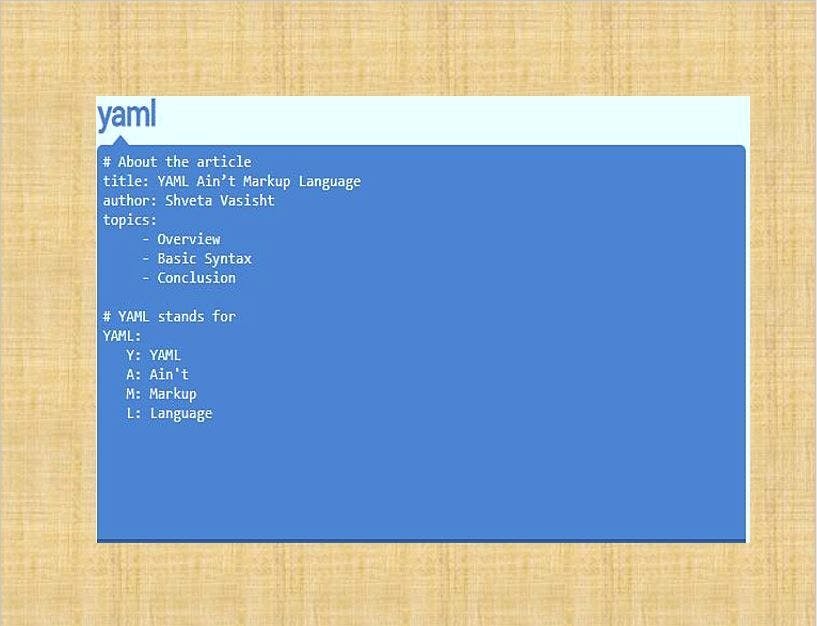Employees:
- id: 4
employeename: Ryan
employeetitle: Marketing Manager
{
"Employees": [
{
"id": 4,
"employeename": "Ryan",
"employeetitle": "Marketing Manager"
}
]
}
<?xml version="1.0" encoding="UTF-8"?>
<Employees>
<id>4</id>
<employeename>Ryan</employeename>
<employeetitle>Marketing Manager</employeetitle>
</Employees>- mappings (hashes/dictionaries)
- sequences (arrays/lists)
- scalars strings/numbers)
Basic Syntax
- YAML is case-sensitive.
- YAML file extensions are .yaml , .yml
- Data structures are defined using line separations and whitespace indentations. Tabs are not allowed in YAML.
- Numerals
Unquoted numerals are considered as integers or floating-point values.
id: 4
octalexample: 012345
hexaexample: 0x12d4 weight: 55.5
exp: 12.3015e+05- Strings
firstemployeename: “Ryan”
secondemployeename: ‘Ryan’
thirdemployeename: RyanmultilineString: |
this is a multiline string
this is the second line
this is the third line multilineString: >
this is a single line string
but is written in this format
for clarity- Comments
Multiline comments are not supported. For multiline comments, you have to put # at the start of each line.
# Write your comment here- Key-value pairs
Employees:
id: 4
employeename: Ryan
employeetitle: Marketing ManageEmployees: {id: 4, employeename: Ryan, employeetitle: Marketing Manager}- Objects
Employees:
id: 4
employeename: Ryan
employeetitle: Marketing Manager Employees:
id: 4
employeename: Ryan
employeetitle: Marketing Manager- Lists
Employees:
-Ryan
-JackEmployees: [Ryan, Jack]Employees:
- id: 4
employeename: Ryan
employeetitle: Marketing Manager
- id: 5
employeename: Jack
employeetitle: Product Manager- Boolean
Employees:
- id: 4
employeename: Ryan
employeetitle: Marketing Manager
onleave: True
- id: 5
employeename: Jack
employeetitle: Product Manager
onleave: False- YAML supports multiple documents in a stream.
---
Employees:
- id: 4
employeename: Ryan
employeetitle: Marketing Manager
...
---
Departments:
- id: 1
departmentname: Marketing
...

